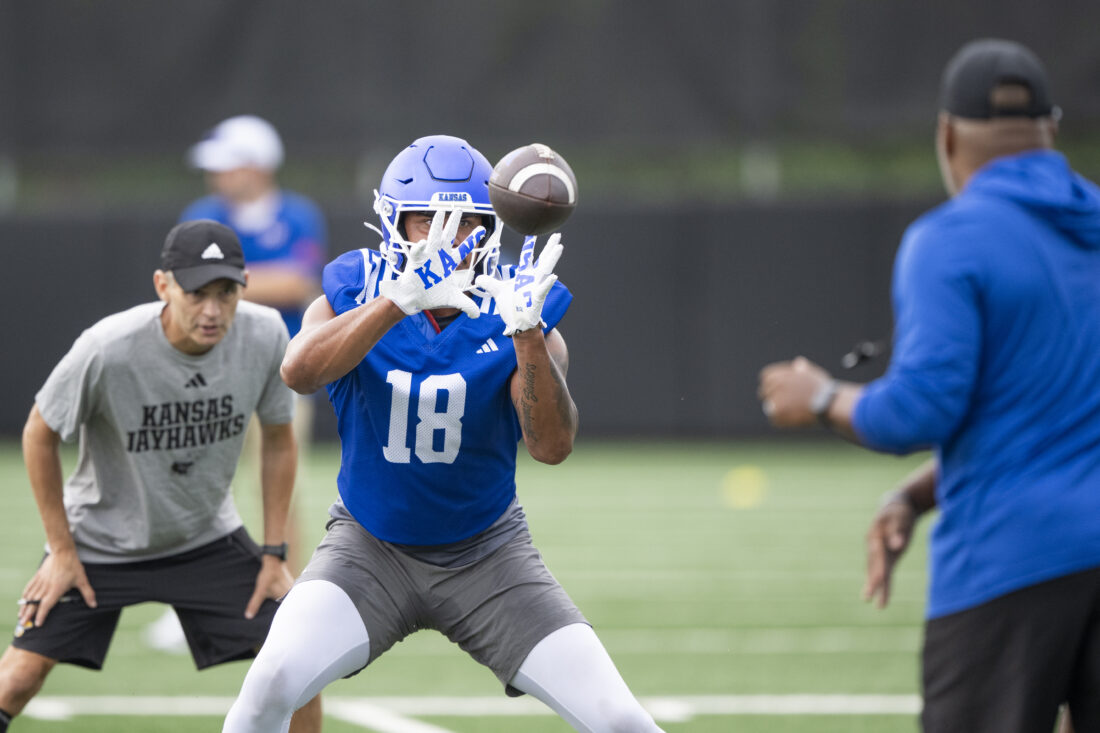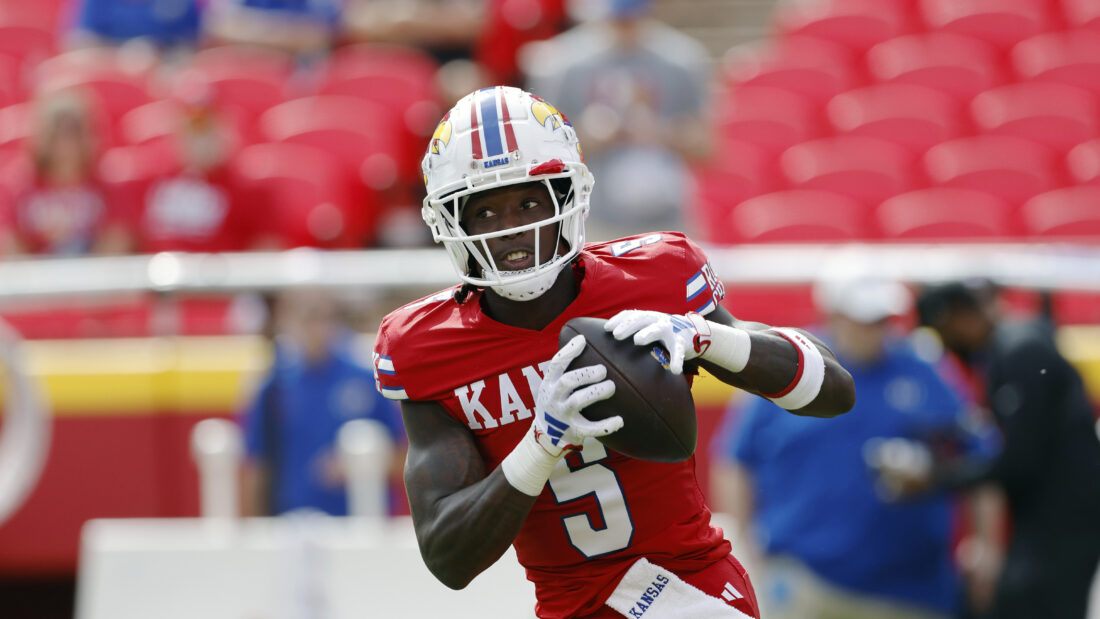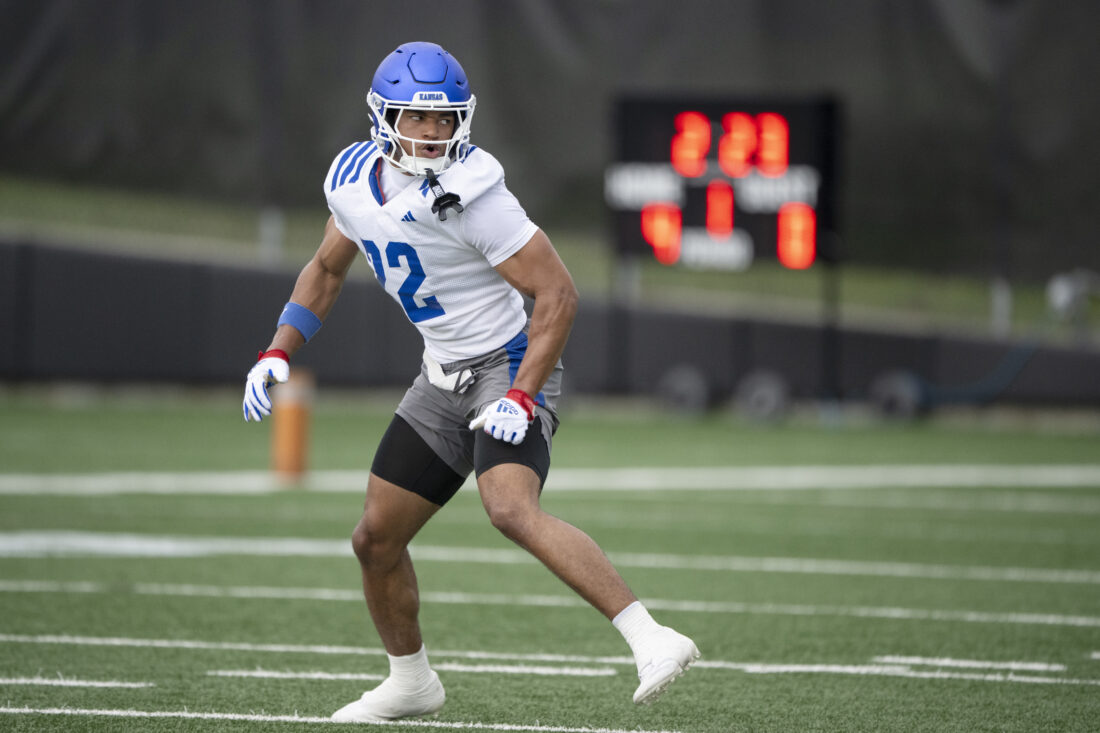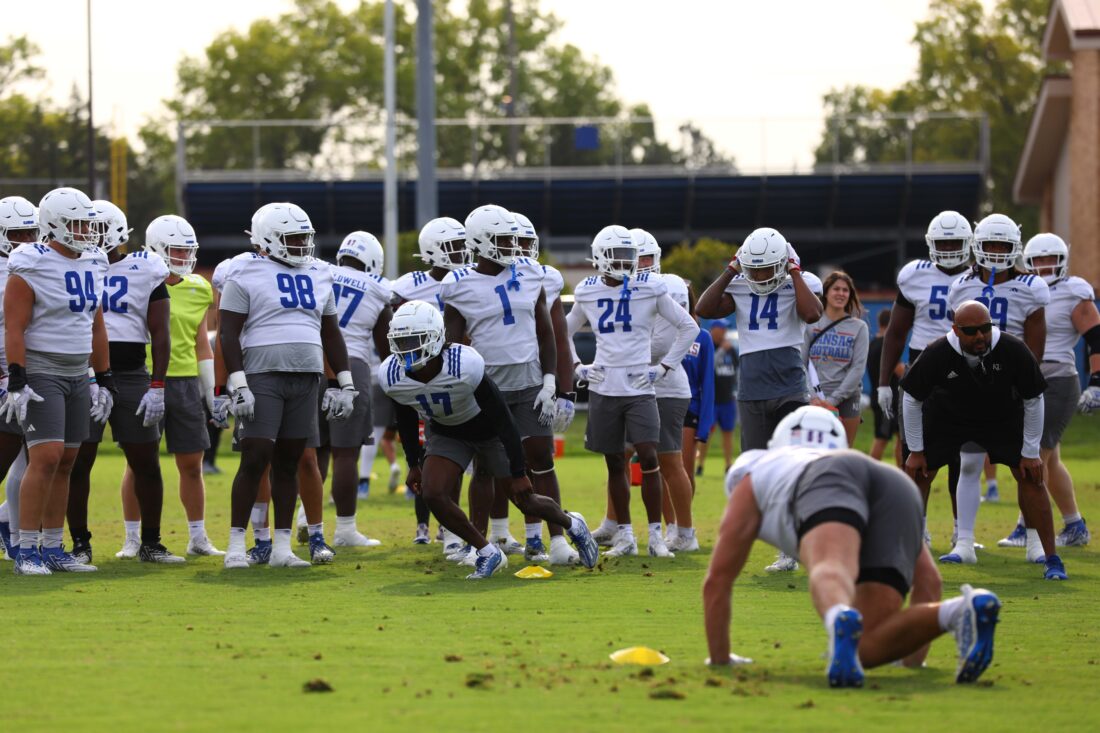Takeaways from KU’s first depth chart of the 2025 season

photo by: AP Photo/LM Otero
Kansas head coach Lance Leipold during the Big 12 NCAA college football media days in Frisco, Texas, Wednesday, July 9, 2025.
The release of an inaugural depth chart is a valuable development at the start of any football season, because it codifies weeks of training-camp speculation in the form a single, largely unambiguous document.
Granted, the 2025 KU depth chart still prompts a lot of questions. Head coach Lance Leipold has returned to using at least a few “ors” this season, after doing away with them entirely at the start of 2024 — a reflection of a now-concluded offseason that by all accounts brought higher levels of competition to Lawrence, with so many new players joining the roster.
In addition, the depth chart doesn’t reveal a lot schematically, KU made some decisions about listing players at specific positions, in one case for the sake of what Leipold called “consistency” (more on that later). Time will tell whether the depth chart reflects where they actually play on the field this year.
Here’s a deeper look at everything one can glean from the first depth chart of the 2025 season, ahead of KU’s season opener on Saturday against Fresno State.

photo by: Mike Gunnoe/Special to the Journal-World
Kansas seniors Enrique Cruz Jr. and Nolan Gorczyca participate in a drill during practice Friday, Aug. 1, 2025 at the David Booth Kansas Memorial Stadium in Lawrence.
O-line ors: Arguably the two most prominent position battles of KU’s offseason were for starting spots at left guard, where Michael Ford Jr. played last year, and right tackle, where the Jayhawks had Logan Brown before. Those battles will apparently continue into the regular-season, at least to some extent.
While James Livingston has apparently faded from the left-guard competition — he is now listed as the backup to Kobe Baynes on the right side of the line — Amir Herring and Tavake Tuikolovatu are still separated by an “or,” as are Nolan Gorczyca and Enrique Cruz Jr. at right tackle.
However, these particular “ors” mean more than meets the eye. Leipold said on Monday that the players listed on top — Herring and Gorczcya — will likely start against Fresno State, but it’s not an all-or-nothing situation, as Tuikolovatu and Cruz will play as well.
“I see those as rotational right now, and that’s the way (offensive line coach Daryl Agpalsa) sees it,” Leipold said.
The rise to day-one starter for Herring is particularly impressive, especially given that he was filling in at center for Bryce Foster early in fall camp. The former Michigan transfer inserted himself into the left-guard competition soon afterward, but Leipold said his improvement dates back to long before then.
“I thought he started to show those signs last spring,” Leipold said. “He’s smart, very consistent technique, and he plays with a nasty streak that you need at that position. Tavake’s had a good camp, but Amir’s been a little more consistent, and that’ll continue to be a position we kind of work through as we go.”

photo by: Mike Gunnoe/Special to the Journal-World
Kansas senior DeShawn Hanika makes a two-handed catch during practice Thursday, July 24, 2025 in Lawrence.
Four tight ends: As much maturity and veteran experience as seventh-year senior DeShawn Hanika brings to the tight-end group, he’s by no means the clear top dog in that position group. While he was still listed atop the depth chart, it was in an “or” cluster with camp standout Carson Bruhn, Rice transfer Boden Groen and returnee Leyton Cure.
“Some guys will obviously play more, but it’s been a really fun group to have,” offensive coordinator Jim Zebrowksi said. “Competition there has helped that position a lot.”
While Hanika’s lack of a clear-cut No. 1 spot is a mild surprise, it isn’t necessarily out of character for KU. Over the years, regardless of who has occupied the offensive coordinator role, the Jayhawks have shown a consistent willingness to deploy different tight ends in different packages and in various spots across the field.
They will certainly continue to do so, although Leipold suggested they will all theoretically be usable in each other’s roles, too.
“As we know, as we go through it, people will start charting what (you are) doing with which guys in the game,” he said. “So we want to make sure that they all know what they’re doing in all the packages.”

photo by: AP Photo/Colin E. Braley
Kansas wide receiver Doug Emilien (5) during an NCAA football game on Saturday, Sept. 28, 2024, in Kansas City, Mo.
Returners staying strong: Ball State transfer Cam Pickett made a strong impression in camp and earned praise from coaches with both his reliability in the slot and his ability to make defenders miss after the catch. But he’s not a shoo-in for extended playing time; he’s sharing his receiver spot with returnee Doug Emilien.
Similarly, on the outside, Albany transfer Levi Wentz is listed in an “or” pairing below redshirt sophomore returner Keaton Kubecka.
To some extent, this looks like a measure of respect for players who have already spent years in the program. But KU didn’t necessarily apply that at other positions — for example, also at wide receiver, Emmanuel Henderson Jr. staked his claim for a solo starting spot, and on defense players like safety Lyrik Rawls and multiple linebackers are clear-cut starters — and Leipold had given Emilien and Kubecka kudos during the preseason, especially when they made plays in an early-August scrimmage.
Much like with the previous positions, though, Leipold said on Monday that all the receivers in question would play.
“I think we have a lot of selfless guys in that room, and I think it’s going to be able to show on the field as well,” quarterback Jalon Daniels said.
Also, Columbia transfer Bryson Canty, who dealt with a leg injury for much of fall camp, was excluded from the depth chart altogether in favor of Bryce Cohoon. Leipold said Canty would likely suit up for Saturday’s opener but be limited after missing so much time — though he added that Canty had recently undergone a pair of encouraging practices.

photo by: Mike Gunnoe/Special to the Journal-World
Kansas junior Syeed Gibbs participates in a drill during practice Thursday, July 24, 2025 in Lawrence.
Muddled at Hawk: The “Hawk” linebacker position KU used in years past, a sort of linebacker-safety hybrid role occupied primarily by linebacker Craig Young earlier in Leipold’s tenure and then by safety Marvin Grant and linebacker Jayson Gilliom in 2024, did not come up much at all in conversations with coaches and players during the offseason.
Instead, they suggested in all sorts of ways at all sorts of times that under new defensive coordinator D.K. McDonald, KU was shifting to more frequent use of a 4-2-5 look, with just two linebackers and a fifth defensive back role, referred to as a “nickel,” with some resemblance to the Hawk but played by the likes of safety Mason Ellis and cornerback Syeed Gibbs.
That made it rather surprising when the Hawk was still listed on Monday’s depth chart with Gilliom followed by Gibbs and then Ellis, seemingly merging multiple archetypes of player. That could be a reflection of how KU plans to line up against different offensive looks — maybe even three different ones.
McDonald said, “We feel like we got the depth and talent to be able to do a couple things,” and Leipold said KU retained the Hawk name “just for the consistency part of it.”
“There’ll be nickel, and there’ll be somebody playing that spot,” Leipold said. “You got hybrid guys in there that have done some different things as we present different looks.”

photo by: Chance Parker/Special to the Journal-World
Kansas freshman Austin Alexander (17) runs through drills during practice on Friday, August 9, 2024.
Graham’s injury persists: Some banged-up Jayhawks, like Canty or defensive tackle Gage Keys, were excluded from the depth chart altogether. Cornerback D.J. Graham II, who has been working his way back into action while dealing with nerve damage that limited his participation in camp, still got a place on the list. But he is listed behind redshirt freshman Austin Alexander, and that isn’t just a temporary measure — it suggests KU is ready to play Alexander for significant snaps early in the season.
“D.J. had an excellent spring, but he’s just back to getting going again,” Leipold said. “I thought — he was out there today, made a few nice plays out there today — he’s getting more back in the swing of it, but Austin’s had a good camp, he’s worked extremely hard and as we progress right now, that’s where we’ll start.”
Leipold pointed out that KU has more experienced depth than it did in 2024, with players like Graham and Alabama transfer Jahlil Hurley, a redshirt sophomore.
That may be true, but it also has less experienced projected starters in Alexander, who did not play in 2024, and Jalen Todd, who showed promise as a true-freshman nickel back late in the season.
“Yeah, Jalen and Austin haven’t played a lot or at all yet in a college football game, but we’re confident in them, just like we were the day they became Jayhawks that we thought this day would come for them,” Leipold said.
Don’t be surprised if Hurley and even the recovering Graham figure in on Saturday, as McDonald KU would likely have “a good rotation of guys.”
The lone freshman: Tate Nagy isn’t the only true freshman listed on the depth chart because KU’s backup kicker, Dane Efird, is also in his first year with the Jayhawks. But he is, perhaps unsurprisingly, the only true freshman in a starting role: He will be KU’s punt returner.
Nagy is the son of Kansas City Chiefs offensive coordinator Matt Nagy. He is also listed at 5-foot-10 and 165 pounds and less than a year ago was playing quarterback at Blue Valley West High School. But ever since enrolling early he has consistently impressed his coaches and teammates. Leipold acknowledged on Monday that his ascension to the punt-return spot is “kind of unique for a true freshman in the role and the path that he’s taken.”
As special teams coordinator Taiwo Onatolu said recently, the main thing KU looks for in a punt returner is “securing the change of possession” — that is, catching the ball.
“He’s done an excellent job of making plays back there, as far as tracking the ball, consistent catching,” Leipold said. He added that Nagy also excels at making the first defender miss.
He did say that Kubecka, listed as the second-string returner, will get his opportunities this year as well.






